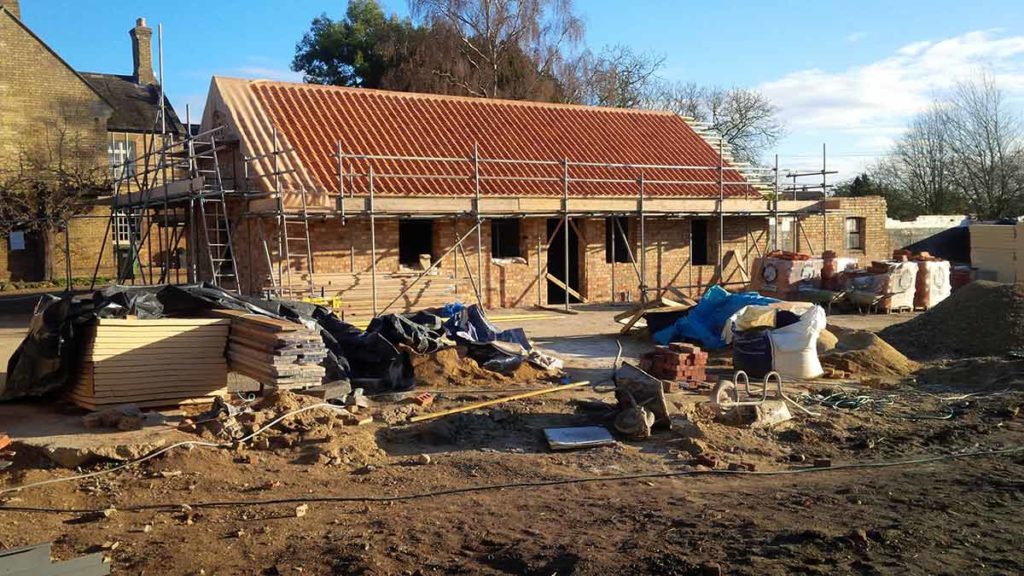
November saw the arrival of my new air compressor and sand blaster. The original intention was to maximise the cleaning capacity on the bricks by blasting them before demolition. After some experimentation I decided that this was not going to work. The paint I was trying to remove was probably some horrible wartime cement mix that refused to leave without taking the brick face with it. What horrors of building technology the war ushered in! We are recycling almost all the old 1860’s bricks if they were laid in lime mortar. We can’t recycle any if they were repaired or altered using Portland cement. When you think of all those millions of houses we have built since 1945 and think how many clay bricks were used it is a terrible shame that all will end up as crush or buried in landfill sites.
The site is strange. At one end the office barn is being rebuilt. To one side Margaret is slowly digging her way out from behind a rampart of dirty bricks while, at the other end the remaining barns are being taken down fully. We are recovering a few of the Victorian trusses (those that are not too decayed) in the office but all the modern stuff is of no use. In this my sandblasting skills are being deployed and the old timber trusses are emerging from behind whitewash (lime to keep down infections in the animal stock). Really nice simple king post trusses. Probably made on site in the 1880s.
By mid-month the roof structure over the office barn was in place and the insulation being fitted. I’m a bit wary of Celotex (and other similar brands) but it is a fantastic insulant and, frankly, a wonder of chemistry and industrial process. They say it is not harmful but it makes you weep like a baby when cutting it. Same as onions I suppose but I do wonder at the longevity.